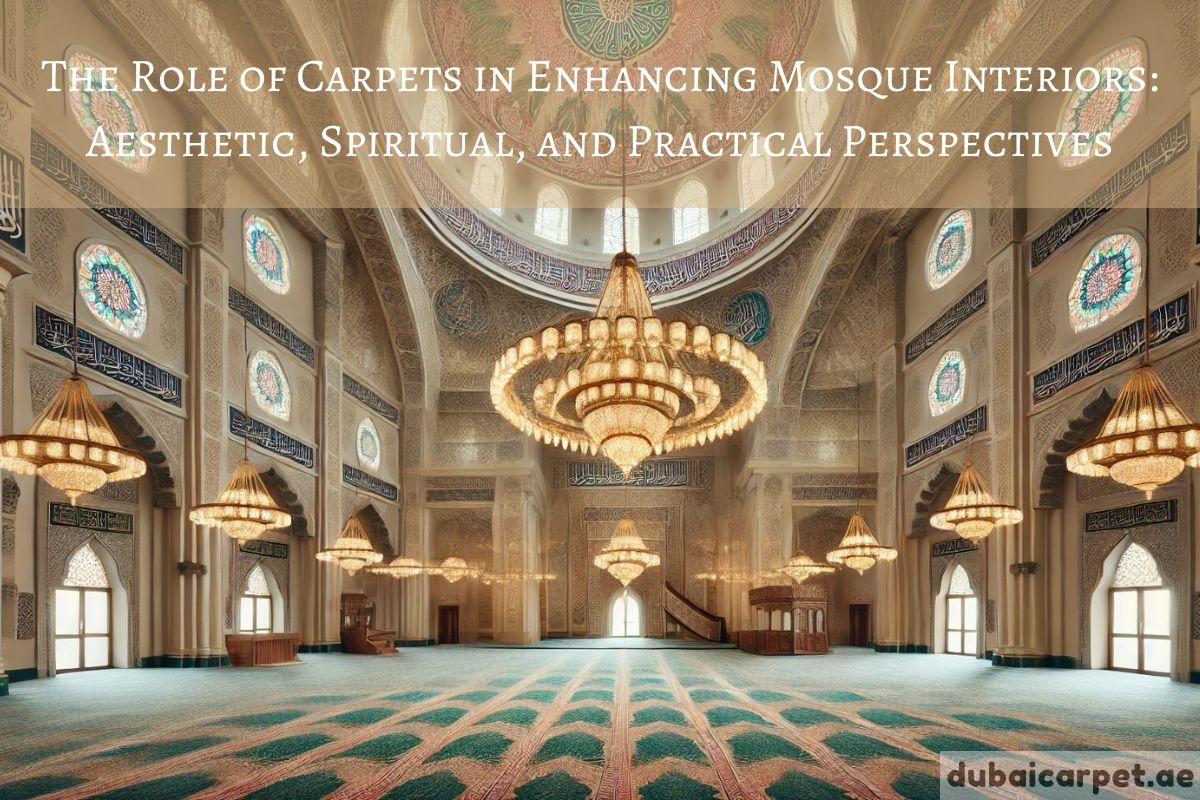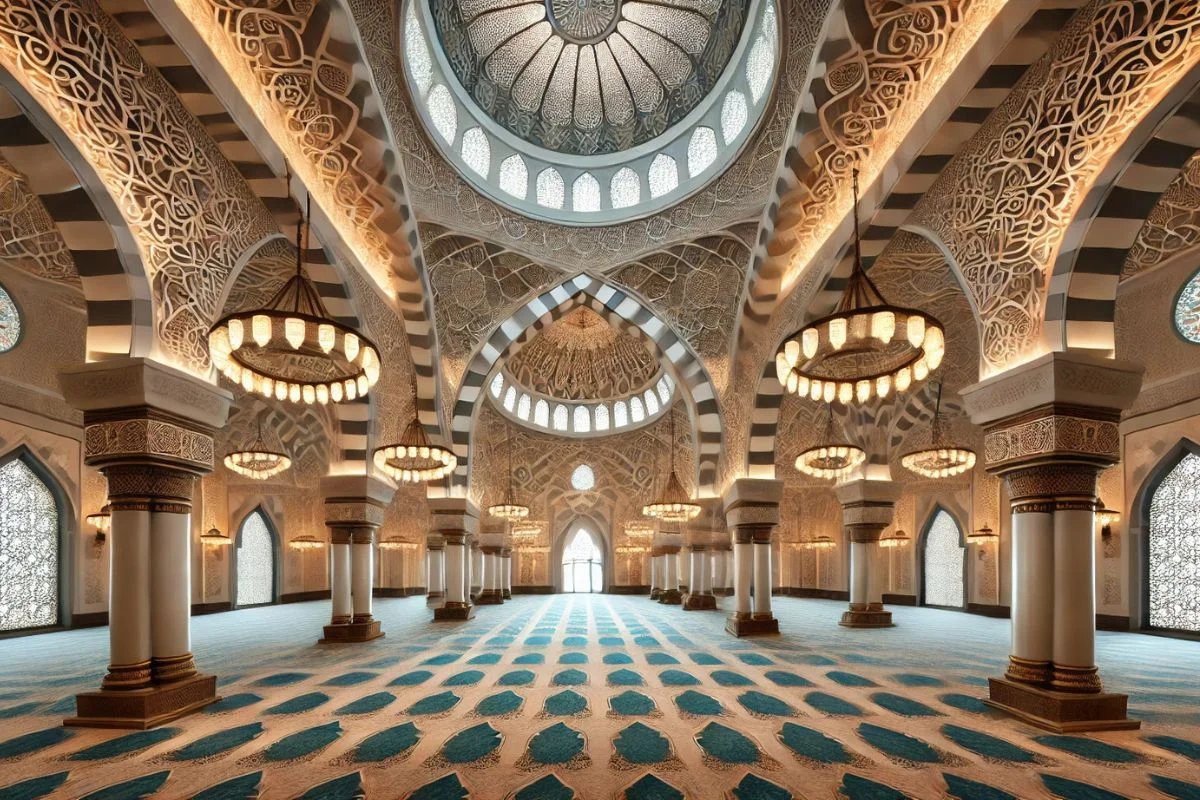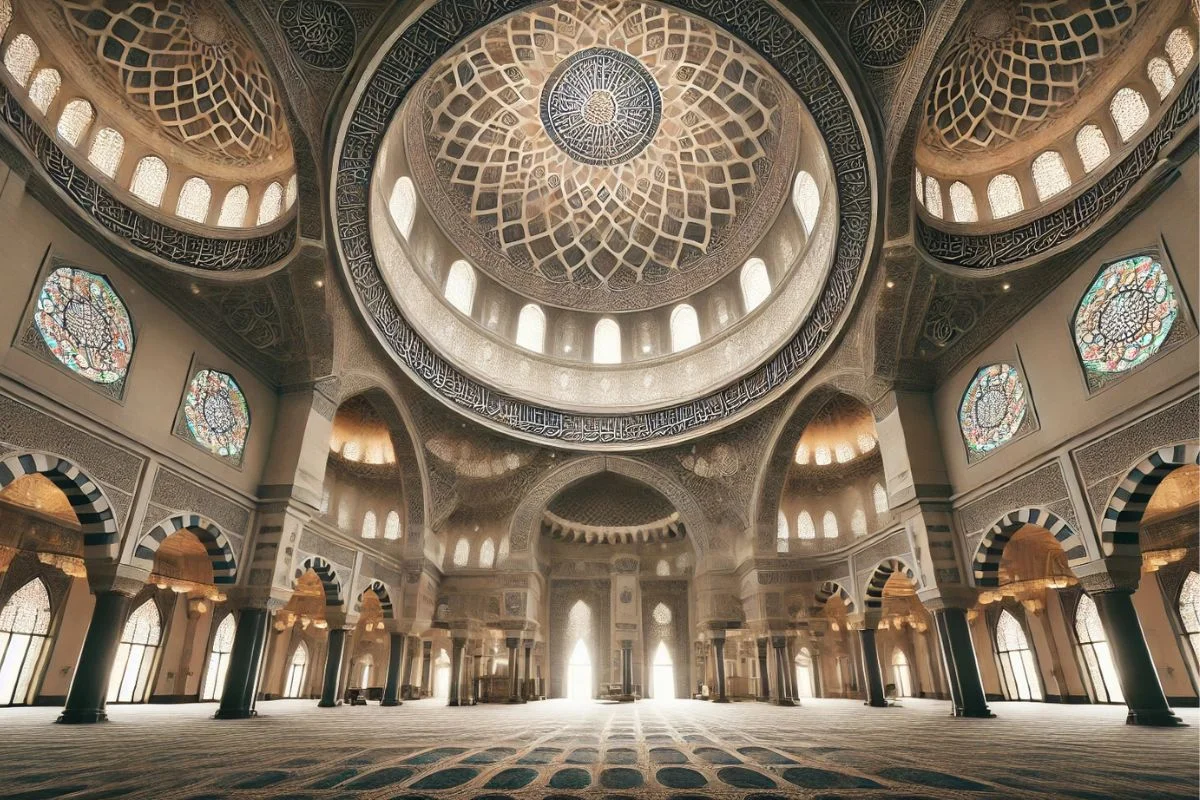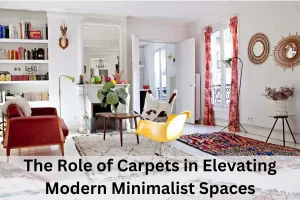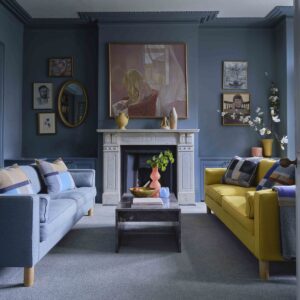Carpets play a pivotal role in mosque interiors, serving far more than just a functional purpose. They create a serene and welcoming environment, setting the stage for prayer and reflection. Beyond their practical use, mosque carpets are often masterpieces of design, featuring intricate patterns and rich colors that enhance the space’s spiritual ambiance. From providing comfort during long hours of worship to symbolizing cultural heritage, carpets are an essential element of mosque architecture. In this post, we’ll explore how these humble yet exquisite textiles contribute to the aesthetic, spiritual, and practical dimensions of mosque interiors.
Weaving History: The Timeless Significance of Carpets in Mosques
Carpets have long been integral to mosque interiors, tracing back centuries. Their use began as a way to provide worshippers with a clean, comfortable surface for prayer. Over time, they evolved into cultural artifacts, reflecting the artistic heritage of the regions they came from. Persian, Turkish, and Arabian carpets became renowned for their intricate designs and craftsmanship. These carpets often feature symbolic motifs, such as geometric patterns and floral elements, which align with Islamic art’s emphasis on avoiding depictions of living beings. Through the ages, carpets have remained a testament to the intersection of faith, culture, and artistry in mosque spaces.
Weaving Beauty into Sacred Spaces: The Aesthetic Power of Mosque Carpets
Carpets transform mosque interiors into visually stunning sanctuaries. Their intricate patterns, vibrant colors, and harmonious designs enhance the architectural beauty of the space. Geometric shapes, arabesques, and calligraphic elements often found in these carpets complement the mosque’s walls, domes, and arches. By introducing layers of texture and warmth, carpets create a cohesive and inviting environment. The symmetry and repetition of patterns evoke a sense of balance and unity, reinforcing the spiritual purpose of the space. In essence, carpets serve as artistic canvases, elevating the mosque’s aesthetic appeal while adhering to the principles of Islamic design.
Weaving Spirituality: How Carpets Elevate the Worship Experience
Carpets play a crucial role in fostering a spiritual atmosphere in mosques. They provide a dedicated space for worship, helping worshippers feel grounded and connected during prayer. The tactile experience of kneeling on a soft, beautifully designed carpet can enhance focus and reverence. Many carpets feature symbolic elements, such as mihrab-inspired motifs, which guide worshippers in the direction of Mecca. The serene ambiance created by these textiles contributes to a sense of peace and mindfulness, allowing worshippers to fully immerse themselves in their spiritual practices. Carpets, therefore, serve as silent facilitators of a deeper connection to faith.
Comfort, Safety, and Serenity: The Practical Perks of Mosque Carpets
Beyond their aesthetic and spiritual value, carpets offer practical advantages in mosques. They provide a comfortable surface for prolonged periods of prayer, supporting worshippers physically. Additionally, carpets enhance the acoustics of the space by absorbing sound, minimizing echoes, and creating a quieter, more focused environment. Their soft texture helps prevent slips and falls, ensuring safety during crowded prayer times. Moreover, carpets insulate the floor, keeping it warm in colder climates and adding a layer of comfort. These practical benefits make carpets indispensable in maintaining a functional and welcoming mosque environment for worshippers.
Cultural Tapestries: Regional Variations in Mosque Carpets
The style and design of mosque carpets vary significantly across regions, reflecting local traditions and artistic influences. Persian carpets are renowned for their elaborate floral patterns and rich colors, while Turkish carpets often feature bold geometric designs and bright hues. Arabian carpets, on the other hand, emphasize minimalistic patterns with earth-toned palettes. These regional differences not only highlight the diversity within the Islamic world but also celebrate the unique cultural identities of each community. Exploring these variations reveals how carpets serve as cultural ambassadors, showcasing the artistic legacy of their regions within the sacred space of the mosque.
Maintenance and Durability
Maintaining mosque carpets is essential to preserve their beauty and functionality. Regular cleaning is necessary to remove dust, dirt, and stains, ensuring a hygienic environment for worshippers. Vacuuming, spot cleaning, and professional washing are common practices to extend the life of these carpets. Durable materials like wool or silk blends are often chosen for their resilience and ability to withstand high foot traffic. Proper maintenance also includes rotating carpets to distribute wear evenly. By investing in regular upkeep, mosques can ensure their carpets remain in excellent condition, continuing to provide comfort and aesthetic appeal for years to come.
Innovations in Mosque Carpets
Modern technology has introduced exciting innovations in mosque carpet design and production. Custom-made carpets now cater to the specific dimensions and aesthetic preferences of individual mosques. Advanced dyeing techniques allow for more vibrant and durable colors, while new materials offer enhanced stain resistance and longevity. Some carpets even incorporate antimicrobial properties to maintain hygiene. Innovations like under-floor heating-compatible carpets provide added comfort during colder months. These advancements ensure that mosque carpets not only preserve their traditional beauty but also meet the evolving needs of contemporary worship spaces, blending heritage with modern functionality.
Carpets as a Symbol of Community and Unity
Carpets in mosques symbolize unity, as they provide a shared space where worshippers come together in prayer. The communal experience of standing shoulder to shoulder on a single, continuous carpet reinforces the sense of belonging and equality among worshippers. In many cases, the community plays a role in selecting and contributing to the procurement of these carpets, further strengthening collective ties. Whether through donations or collaborative decision-making, carpets often represent the shared values and commitment of the mosque’s congregation. They serve as a tangible reminder of the community’s unity and devotion, fostering a spirit of togetherness.
Conclusion: The Foundation of Serenity and Unity
Carpets in mosque interiors are more than decorative elements; they are vital contributors to the mosque’s aesthetic, spiritual, and practical essence. They enhance the beauty of the space, foster a tranquil atmosphere for worship, and offer comfort and safety to worshippers. Reflecting rich cultural heritage and regional artistry, mosque carpets unite communities through shared experiences and collective care. As innovations continue to blend tradition with modern needs, these carpets will remain a cornerstone of mosque design, symbolizing both the timeless beauty of Islamic art and the enduring unity of the faithful.

